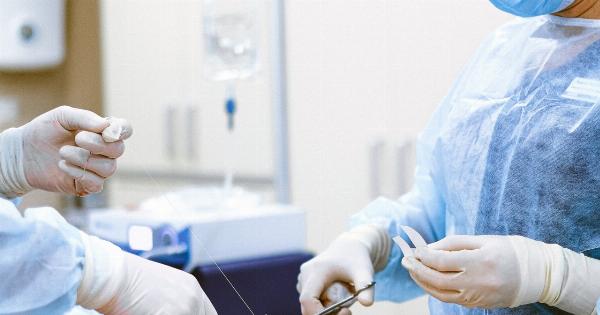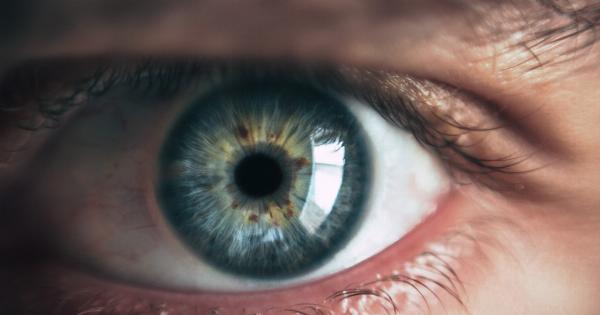Glaucoma and cataract are two common eye conditions that often coexist in individuals, particularly in the elderly population.
Glaucoma refers to a group of eye disorders that can cause permanent vision loss by damaging the optic nerve, whereas cataract is a clouding of the natural lens in the eye that leads to blurry vision. While these two conditions are distinct, undergoing cataract surgery has demonstrated potential benefits in improving glaucoma outcomes and overall eye health.
In this article, we will explore the relationship between cataract surgery and glaucoma and delve into whether cataract surgery can indeed help improve glaucoma.
Understanding Glaucoma
Glaucoma is often referred to as the “silent thief of sight” as it typically progresses slowly and painlessly, gradually diminishing visual function.
In this condition, the optic nerve, responsible for transmitting visual information from the eye to the brain, is damaged due to increased intraocular pressure (pressure inside the eye). The exact mechanism of glaucoma development is not fully understood; however, it is often associated with inadequate drainage of aqueous humor, the fluid circulating within the eye.
There are several types of glaucoma, including primary open-angle glaucoma (POAG) and angle-closure glaucoma. POAG is the most common type and typically develops over time without any noticeable symptoms until vision loss becomes apparent.
On the other hand, angle-closure glaucoma typically presents with sudden and severe symptoms, such as eye pain, blurred vision, and nausea.
The Role of Cataract in Glaucoma
Cataracts, the clouding of the eye’s lens, are prevalent among individuals aged 60 and above.
As cataracts progress and interfere with vision, they can potentially impact the accuracy of glaucoma assessments, making it difficult to accurately measure intraocular pressure or assess the health of the optic nerve. Additionally, the presence of cataracts may hinder the visualization of important structures during glaucoma examinations, such as the trabecular meshwork, which is responsible for draining aqueous humor.
Furthermore, studies have hypothesized that dysfunctional drainage due to cataracts may increase intraocular pressure, worsening the progression of glaucoma.
Although the relationship between cataracts and glaucoma remains complex and multifactorial, addressing cataracts through surgery might play a role in improving glaucoma outcomes.
Cataract Surgery and Glaucoma
Cataract surgery involves removing the clouded natural lens and replacing it with an artificial intraocular lens (IOL) to restore clear vision.
While cataract surgery primarily aims to correct visual impairment caused by cataracts, it has been noted to have additional positive effects on glaucoma management.
Improved Accuracy in Glaucoma Evaluation
By removing the cloudy lens during cataract surgery, visual clarity is restored, allowing for more accurate assessment of intraocular pressure and the optic nerve.
This is particularly relevant when performing measurements such as tonometry (which measures intraocular pressure) or evaluating the optic nerve’s structure through techniques like optical coherence tomography (OCT).
With improved access and visualization of the anterior chamber angle, the surgeon can better evaluate the trabecular meshwork and identify any blockages or abnormalities that might be contributing to glaucoma.
This information can guide treatment decisions and help optimize the management of glaucoma.
Reduction in Intraocular Pressure
Although cataract surgery is not a direct treatment for glaucoma, studies have reported a significant reduction in intraocular pressure following cataract surgery in glaucoma patients.
One theory suggests that the removal of a cataract may improve the aqueous humor outflow by relieving mechanical blockages caused by lens opacities.
Moreover, the insertion of an intraocular lens during cataract surgery can lead to a widening of the anterior chamber angle, thereby enhancing the drainage of aqueous humor.
This helps regulate intraocular pressure and may contribute to the overall management of glaucoma.
Combining Cataract Surgery with Glaucoma Procedures
In some cases, patients with cataracts and glaucoma may benefit from combining cataract surgery with glaucoma procedures to further enhance outcomes and control intraocular pressure.
One common approach is performing trabeculectomy or tube shunt surgery, often during or shortly after cataract surgery.
Trabeculectomy involves creating a small drainage channel to facilitate the drainage of aqueous humor, thus lowering intraocular pressure. Similarly, tube shunt surgery involves inserting a tiny tube to divert the fluid to an external reservoir.
Combining these glaucoma procedures with cataract surgery allows the patient to address both conditions simultaneously, reducing the need for multiple surgeries and potentially improving visual outcomes.
Considerations for Cataract Surgery in Glaucoma Patients
While cataract surgery can have potential benefits for glaucoma patients, several important considerations need to be taken into account:.
1. Severity of Glaucoma:
The severity of glaucoma influences the treatment approach and the expected outcomes after cataract surgery.
In advanced stages of glaucoma, where significant damage to the optic nerve has occurred, the potential benefit of cataract surgery on glaucoma management may be limited.
2. Medication Management:
Before undergoing cataract surgery, glaucoma patients may need to adjust their medication regimen. Certain eye drops used to manage glaucoma can interfere with post-operative healing or increase the risk of complications.
Consultation with an ophthalmologist is crucial to evaluate and adjust the medication plan accordingly.
3. Surgical Expertise:
Performing cataract surgery in glaucoma patients requires a skilled surgeon who can navigate the complexities of both conditions. Choosing an experienced surgeon with expertise in managing glaucoma is essential to optimize surgical outcomes.
4. Patient Age and Health:
Considering the elderly population is particularly affected by both cataracts and glaucoma, it is essential to assess the patient’s overall health and individual circumstances.
Age-related factors such as frailty or the presence of other medical conditions should be considered when determining the suitability of cataract surgery in glaucoma patients.
Conclusion
While cataract surgery primarily aims to address vision impairment caused by cataracts, it can potentially offer additional benefits for glaucoma patients.
By improving accuracy in glaucoma evaluation, potentially reducing intraocular pressure, and providing an opportunity to combine glaucoma procedures, cataract surgery could play a role in improving overall visual outcomes and glaucoma management. However, the decision to undergo cataract surgery should be made in close consultation with an ophthalmologist, considering the severity of glaucoma, medication management, surgical expertise, and the patient’s overall health.




























